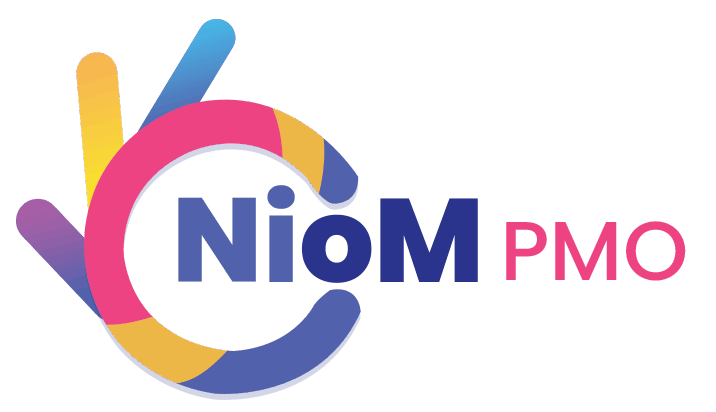Description

Easy Redmine

NioM PMO
Comprehensive Overview: Easy Redmine vs NioM PMO
Easy Redmine Overview
a) Primary Functions and Target Markets
Easy Redmine is a project management software that serves as a comprehensive tool for managing projects, tasks, and resources. It is built on the Redmine open-source platform and offers enhanced features such as Gantt charts, resource management, time tracking, and a robust reporting system. It is designed to facilitate project management for both small teams and large enterprises. Its target markets include industries such as IT, education, healthcare, finance, and manufacturing, focusing on teams that require extensive collaboration features and detailed project oversight.
b) Market Share and User Base
Easy Redmine is part of a competitive market of project management tools. While it's not the market leader, it has carved out a niche among Redmine users and those seeking a more customizable, open-source-based solution. Its user base comprises various industries and organizations that value flexibility and modularity in project management solutions. Market share specifics can vary, but Easy Redmine has managed to maintain a steady presence, particularly in Europe where its parent company is based.
c) Key Differentiating Factors
- Open-source Foundation: Built on Redmine, allowing for extensive customization and integration.
- Modular Design: Offers numerous plugins and additional features like finance management and Kanban boards.
- Customization: Highly adaptable to specific industry needs.
- Integration Capabilities: Easily integrates with existing systems and tools.
- Strong Reporting Tools: Provides detailed insights and analytics for improved decision-making.
NioM PMO Overview
a) Primary Functions and Target Markets
NioM PMO (Project Management Office) is a project management software that focuses on streamlining PMO processes, governance, and strategic alignment across projects. It is geared towards enhancing project portfolio management (PPM), ensuring efficient resource allocation, and supporting strategic project execution. The primary target market for NioM PMO includes medium to large enterprises with complex project portfolios, particularly in sectors such as telecom, finance, and government, where robust governance and alignment with strategic business goals are crucial.
b) Market Share and User Base
NioM PMO, being a more specialized tool, has a smaller but focused market share compared to broad-spectrum project management tools. It appeals to organizations seeking comprehensive governance and strategic alignment in their project management practices. Its user base typically includes PMOs of large corporations and government bodies, reflecting its strength in facilitating high-level project oversight and strategic project alignment rather than merely task management.
c) Key Differentiating Factors
- Strategic Alignment: Strong focus on aligning projects with organizational goals.
- Governance Features: Emphasizes project governance and compliance, suitable for regulated industries.
- Resource Management: Advanced capabilities in resource allocation and utilization.
- Portfolio Management: Facilitates managing a set of projects collectively to achieve strategic objectives.
- Scalability: Designed to handle complex projects with a higher degree of inter-project dependencies.
Comparative Analysis
-
Market Approach: Easy Redmine is more about providing a comprehensive toolkit for general project management with high customization, while NioM PMO specializes in governance and strategic alignment for large enterprises.
-
Customization vs. Specialization: Easy Redmine's open-source roots allow for broad customization, appealing to those who need to adapt the tool to various scenarios. NioM PMO offers features catering specifically to strategic project management and governance, which may not require as much day-to-day task management flexibility.
-
User Base Composition: Easy Redmine has a diverse user base ranging from small businesses to large enterprises, owing to its adaptable nature. NioM PMO is targeted at large organizations with established PMOs looking for structure and control in their project portfolio management.
Overall, both Easy Redmine and NioM PMO serve different needs within the realm of project management, with Easy Redmine being more adaptable and suitable for a broad range of project management tasks, and NioM PMO focusing on strategic alignment and governance for larger organizations.
Contact Info

Year founded :
Not Available
Not Available
Not Available
Not Available
Not Available

Year founded :
2021
Not Available
Not Available
India
http://www.linkedin.com/company/niom-pmo
Feature Similarity Breakdown: Easy Redmine, NioM PMO
When comparing project management tools like Easy Redmine and NioM PMO, it's important to focus on their core features, user interface, and any unique functionalities that distinguish them. Here’s a breakdown based on what's generally expected from these types of tools. However, specific features might vary based on the version or customization each platform offers.
a) Core Features in Common
Both Easy Redmine and NioM PMO are tools designed to enhance project management efficiency and usually share several core features:
-
Project Planning and Scheduling:
- Gantt charts for visual project timelines.
- Task management including dependencies, priorities, and deadlines.
-
Resource Management:
- Tools for resource allocation and utilization tracking.
- Workload balance to optimize team performance.
-
Collaboration Tools:
- Commenting and file sharing to facilitate team communication.
- Real-time notifications and updates.
-
Time Tracking and Reporting:
- Integrated time tracking to monitor productivity.
- Comprehensive reporting tools to assess project progress and budget adherence.
-
Budget Management:
- Cost tracking with options for forecasting and financial analytics.
-
Integration Capabilities:
- APIs and third-party integration for seamless interoperability with other tools and applications.
b) User Interface Comparison
The user interfaces of Easy Redmine and NioM PMO might differ in terms of design aesthetics and user experience:
-
Easy Redmine:
- Typically offers a clean, structured interface that balances functionality with usability.
- Well-organized dashboards with customizable widgets for personalized user experience.
- Often praised for a visually intuitive layout that caters to both novice and experienced users.
-
NioM PMO:
- May provide a more specialized interface tailored towards PMO-specific tasks and requirements.
- Could focus on providing granular control and detailed visualization for project oversight.
- Might have a steeper learning curve if it offers extensive customization and configuration options.
c) Unique Features
Each platform might offer unique features that set them apart:
-
Easy Redmine:
- Offers extensions and plugins for enhanced capabilities, such as risk management, WBS, and agile management.
- Known for its robust support for IT and software development projects with specific modules for these industries.
- Strong emphasis on customization options with features like custom fields and workflows.
-
NioM PMO:
- Could provide specific modules designed for professional PMO needs, including advanced portfolio management.
- Might include features for strategic alignment of projects with organizational goals, which can be critical for PMO success.
- Potentially focuses on governance and compliance tools aiding in maintaining project quality standards.
Each tool generally evolves to cater to the needs of its user base, so the presence and refinement of features can vary over time or with different editions. For the most current feature set, visiting the product website or consulting with a sales representative can provide the latest information.
Features

Project Management
Collaboration Tools
Customization and Integration
Time Management

Integration Options
Project Management
Reporting and Analytics
Resource Allocation
Best Fit Use Cases: Easy Redmine, NioM PMO
When considering project management tools like Easy Redmine and NioM PMO, it's important to evaluate them based on the specific needs, industry verticals, and company sizes for which they are most suitable. Here’s a breakdown of their best fit use cases:
Easy Redmine
a) Types of Businesses or Projects:
- Technology Companies: Easy Redmine is well-suited for software development companies that require advanced features such as agile project management, version control integration, and team collaboration tools.
- Engineering Firms: Companies that require detailed resource management, time tracking, and project complexity handling can leverage Easy Redline’s comprehensive tools for these needs.
- Consulting Services: The platform's robust reporting and customization options make it a good fit for consulting firms that manage multiple client projects.
- Large Enterprises: Enterprises with widespread projects and teams will benefit from Easy Redmine’s scalability, allowing extensive project management capabilities and interoperability with other enterprise systems.
d) Industry Verticals and Company Sizes:
- Verticals: IT, engineering, construction, and consulting.
- Company Sizes: It is suitable for medium to large enterprises due to its advanced feature set and scalability-enhancing plugins that cater to complex project portfolios.
NioM PMO
b) Preferred Scenarios:
- Small to Medium-Sized Enterprises (SMEs): NioM PMO is ideal for SMEs looking for an affordable, scalable project management office solution that is easy to implement.
- Startups: Startups in growth phases can utilize NioM PMO for its focus on strategic alignment and resource optimization without the complexities of larger tools.
- Organizations Seeking PMO Standardization: Companies seeking to establish or mature their Project Management Office capabilities will find NioM PMO’s focus on portfolio management and governance beneficial.
- Industries with Dynamic Project Requirements: Industries like marketing or creative services, where agility and quick adaptation to changing project scopes are key, could benefit from NioM PMO’s flexibility.
d) Industry Verticals and Company Sizes:
- Verticals: Suitable for marketing, creative industries, healthcare, and education that often require adaptable and streamlined project management solutions.
- Company Sizes: Preferable for small to medium-sized businesses or startups due to its emphasis on ease of use, strategic focus, and cost-effectiveness.
Conclusion
- Easy Redmine is aimed at larger, more complex organizations requiring a full suite of high-powered project management tools and features.
- NioM PMO offers a more streamlined, cost-effective solution for smaller to medium-sized businesses or industries with less complex project management needs.
Both tools serve distinct market segments but overlap where businesses require scalable, flexible project management solutions with different levels of complexity and integration.
Pricing

Pricing Not Available

Pricing Not Available
Metrics History
Metrics History
Comparing undefined across companies
Conclusion & Final Verdict: Easy Redmine vs NioM PMO
Conclusion and Final Verdict: Easy Redmine vs NioM PMO
When determining which project management tool offers the best overall value, both Easy Redmine and NioM PMO have distinct strengths and cater to different types of users and organizational needs. Ultimately, the best choice depends on specific requirements, budget, and the nature of the projects expected to be managed.
a) Considering all factors, which product offers the best overall value?
Easy Redmine often provides better overall value for organizations seeking a comprehensive project management solution with extensive features, flexibility, and scalability. This is particularly true for medium to large enterprises that require robust tools for complex project environments. Easy Redmine's extensive third-party integrations, detailed reporting, and strong support for agile methodologies give it an edge in offering a full-featured experience.
b) Pros and Cons of Choosing Each Product
Easy Redmine:
Pros:
- Feature-Rich: Comprehensive suite of tools including Gantt charts, time tracking, resource management, and more.
- Customization: Offers highly customizable interface and workflow options to suit varying project needs.
- Scalability: Suitable for organizations of varying sizes and complexity.
- Integrations: Strong integration capabilities with other software like CRM, ERP, and various APIs.
- Agile Support: Excellent support for agile methodologies and hybrid project management.
Cons:
- Complexity: May have a steeper learning curve due to extensive features, requiring more training and onboarding.
- Cost: It can be more expensive, especially for smaller organizations or startups with tight budgets.
NioM PMO:
Pros:
- User-Friendly: Typically easier to use with a more intuitive interface that requires less training.
- Cost-Effective: May offer a more affordable pricing structure, particularly beneficial for small businesses.
- Specialized Features: Can be ideal for companies focusing on specific project monitoring and strategic alignment.
- Quick Setup: Faster implementation for teams looking to quickly deploy a PMO solution.
Cons:
- Limited Features: Might lack some advanced features required for large-scale or highly complex projects.
- Scalability: May not scale as well for extremely large organizations or those with diverse project portfolios.
- Integration Constraints: Can have fewer integration options compared to Easy Redmine.
c) Specific Recommendations for Users Deciding Between Easy Redmine vs NioM PMO
-
Assess Project Complexity and Scale: If your organization deals with complex projects that require comprehensive tracking and resource management, Easy Redmine is likely the better option. On the other hand, if you are a small company focusing on straightforward project monitoring with limited resources, NioM PMO might be more suitable.
-
Consider Budget Constraints: Organizations with budget constraints should consider NioM PMO due to its lower cost and ease of use, whereas those who can afford a larger investment for advanced features should consider Easy Redmine.
-
Evaluate Feature Needs: Make a list of must-have features for your projects. If your list includes extensive customization, detailed reporting, and agile frameworks support, Easy Redmine is preferable. However, if you need straightforward project oversight and strategic alignment, NioM PMO could be sufficient.
-
Trial and Feedback: Both tools may offer trial periods. Utilize these to gather feedback from different users in your organization to better understand which tool aligns best with your operational needs.
In summary, organizations should carefully evaluate their specific project management needs, budget, and long-term growth plans before choosing between Easy Redmine and NioM PMO. Tailor the choice to your unique organizational context to ensure the best value is achieved.
Add to compare
Add similar companies




